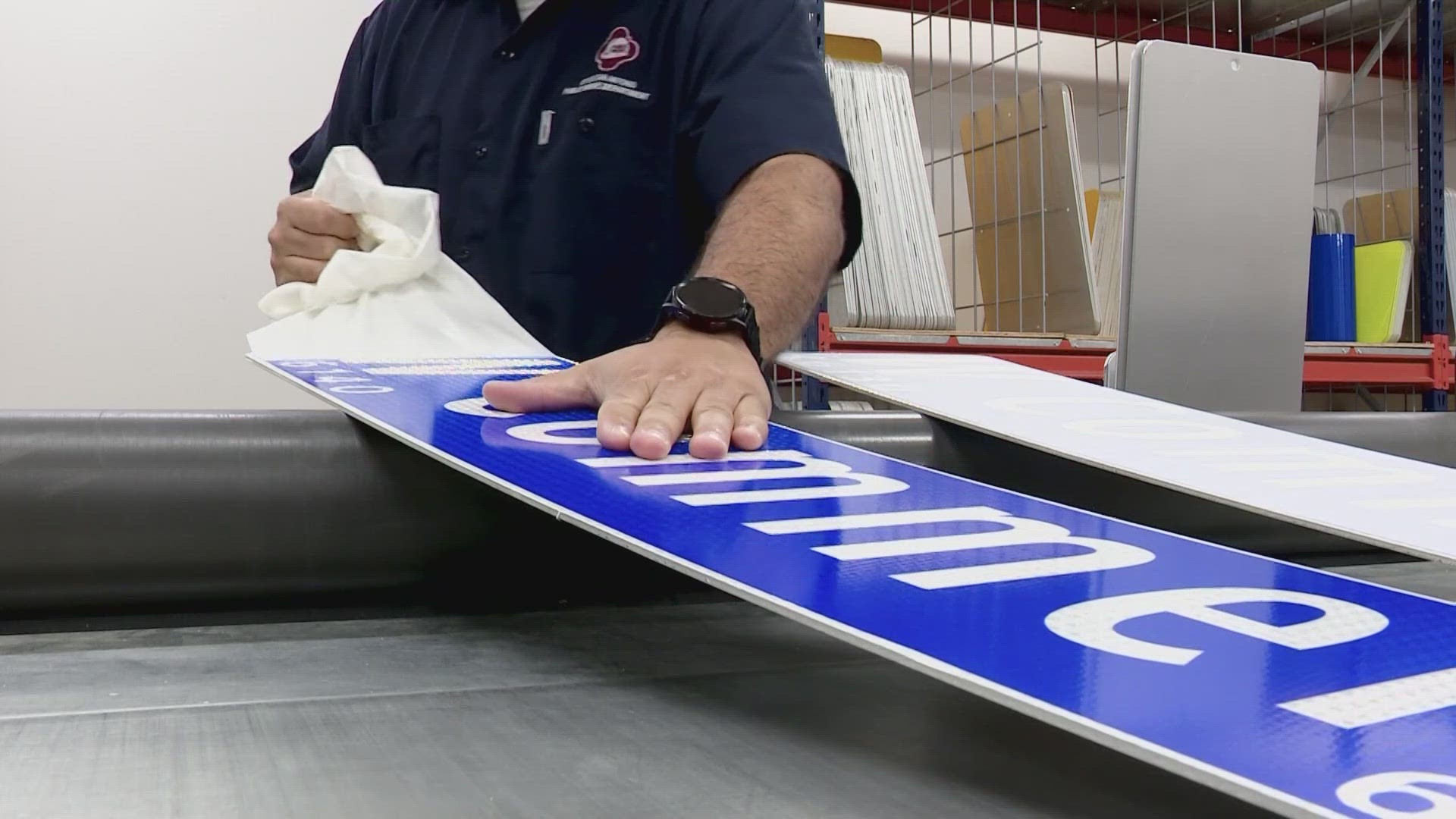SAN ANTONIO — They are at the heart of our roadway system, but what does it take to make a traffic sign? We stepped inside the City of San Antonio Sign Shop to meet the people behind those lifesaving messages.
"How is this roadway behaving, how should it behave? What kind of information do the drivers, the cyclist, the pedestrians need in order to make the best choices so that they can safely navigate our roadway system?"
Those are just some of the questions City of San Antonio Traffic Engineering and Operations Manager Lily Banda considers. We rely on road signs to help us navigate, but transforming a message into a traffic sign requires significant research, hours of labor, and a clear vision.
"We want to make sure that all the information that we provide is clear, is constant, is consistent, so that everybody has all the information they need to make the right choices when they are driving, when they are cycling, when they are, you know, pedestrians on our roadway," Banda said.
Joe Lopez, who is a fabricator at the shop, said the process to put up a sign takes more than you would think: "We have to order the material, we have to sheet it, then we have to design and cut. And then after that we apply the sign. And then not only that, but the installers also need time to put the signs up. A lot of these signs are lower so that as you're driving, you can see it right away. Some of the one-way arrows are larger, double arrows are for sharp turns or sudden turns; and if they don't see that sign as they're driving, you could easily run over a curve, pop the curve or go into a ditch."
San Antonio is one of the only cities in the country who makes their traffic signs in-house. It all starts with cutting the blank—checking the aluminum sheets to ensure materials will adhere as they add a reflective coating. A computer template is printed by a machine—staging the work for fabricators to cut, peel, and roll words onto reflective aluminum blanks. Finished signs head into the city's warehouse until it is time to be installed. Banda explained why those messages can, and do, save lives.
"We're not out there just to wallpaper the environment. What we're doing is providing critical information. Our charge has two sides to it. One of it is the traffic engineering, which is the actual evaluation of our roadways to determine what is needed. One is the city's way of getting information from the public. And what I can tell people is please use it because we can't be everywhere. So not only do we do we welcome 311 requests, but we also rely on them. If you see something out there, you know, go ahead and call it in, whether it's an operational concern, a maintenance concern, there's a sign that missing or that is graffitied, let us know and we will act on it."
The city also keeps thousands of extra signs in their warehouse to cut down on their response time.
"I think our last count was close to 9000, and that goes from no parking signs, school signs and warnings, regulatory, and there's a pretty big spectrum in between: everything here from speed limits to school crossings all in here. We really try hard to shorten the turnaround time to be as flexible and as efficient as we can, and to keep our inventory higher so that we can respond to these vandalized or damaged signs faster. If we didn't have a sign shop for the City of San Antonio, to contract that out could take weeks, months," Lopez said.
Hours of labor isn't the only price paid when signs are graffitied, damaged, or stolen.
"It could be deadly. It could cost somebody their life if there is not the information that is needed for somebody to make the right choices while they're navigating," Banda said
Traffic engineering continues to bring new improvements to roadway safety, but the choice to follow those lifesaving messages is in our hands.
"We have to deal very directly with the driver's behavior. I think one of the biggest challenges is exactly that. Personally, I have three kids that drive. I want to make sure that they drive the way that we want all drivers to follow," Banda explained—adding the value in setting an example every time we get behind the wheel.
Many of the sign shop's employees started with no experience, but what started as an interest grew into a passion when they saw their direct impact.
"In the beginning, it was it was kind of just, you know, I needed some work. But after being here for a while, you do see the difference we make," David Solinas said.
"I like to know that the work I'm doing is out there every day, lasting years and years, keeping the public, more knowledgeable, safe. Um, a lot of times when I pride myself, I tell my wife, 'Look, I put that up or I made that sign,' and she'll just roll her eyes," Lopez added.
Keeping people safe: the united motivator behind the science of our roadway signs.
"I make an impact. I help ensure that everybody, my family included, gets home safe every day," Banda said.

